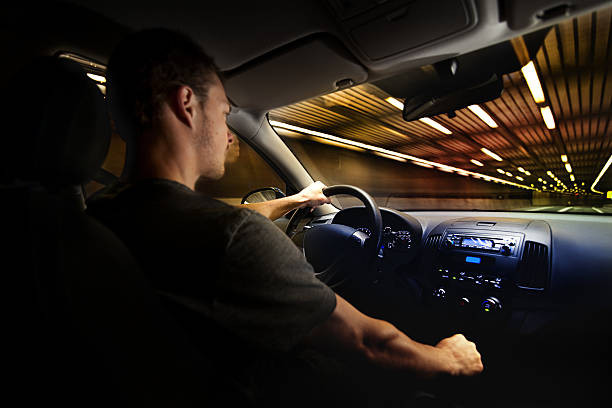Night Driving is Different: Tips for Staying Safe
Driving at night presents unique challenges and requires different strategies to ensure safety on the road. The lack of natural light significantly reduces visibility, making it harder to see road signs, pedestrians, and other vehicles, while the glare from oncoming headlights can temporarily blind you, further complicating night driving. Additionally, drivers are often more tired at night, which can slow reaction times and increase the risk of accidents, and the likelihood of encountering drivers under the influence of alcohol or drugs increases after dark. Here are some essential tips to help you stay safe when driving after dark,
Understand the Challenges of Night Driving
Night driving can be more dangerous due to several factors:
Reduced Visibility: The lack of natural light makes it harder to see road signs, pedestrians, and other vehicles.
Glare from Headlights: Oncoming headlights can temporarily blind you, making it difficult to see.
Fatigue: Drivers are often more tired at night, which can slow reaction times and increase the risk of accidents.
Impaired Drivers: The likelihood of encountering drivers under the influence of alcohol or drugs increases after dark.
Tips for Safe Night Driving
Use Your Headlights Properly
Low Beams: Use low beams in urban areas and when there is oncoming traffic to avoid blinding other drivers.
High Beams: Use high beams on open roads with no oncoming traffic to increase visibility. Remember to switch to low beams when another vehicle approaches.
Clean Your Headlights: Ensure your headlights are clean and functioning correctly to maximize their effectiveness.
Reduce Speed and Increase Following Distance
Slow Down: Night driving requires slower speeds to compensate for reduced visibility and reaction times.
Increase Distance: Maintain a greater following distance between your car and the vehicle ahead to give yourself more time to react to sudden stops or hazards.
Stay Alert and Avoid Fatigue
Take Breaks: If you're driving long distances at night, take regular breaks to rest and stretch.
Stay Hydrated: Drink water and avoid heavy meals that can make you drowsy.
Recognize Fatigue: If you feel sleepy, pull over to a safe location and rest. Do not rely on caffeine or other stimulants to keep you awake.
Keep Your Eyes Moving
Scan the Road: Continuously scan the road ahead and to the sides to spot potential hazards early.
Avoid Staring: Do not stare at oncoming headlights. Instead, look slightly to the right of the road to avoid glare while keeping the oncoming vehicle in your peripheral vision.
Use Defensive Driving Techniques
Be Cautious at Intersections: Approach intersections with caution, even if you have the right of way. Look for drivers who may not see you.
Watch for Pedestrians and Animals: Be extra vigilant for pedestrians and animals, especially in poorly lit areas.
Anticipate Other Drivers’ Actions: Assume other drivers might not see you and be prepared to take evasive action if necessary.
Maintain Your Vehicle
Check Lights: Regularly check that all your lights, including headlights, brake lights, and turn signals, are working correctly.
Clean Windows and Mirrors: Keep your windows and mirrors clean to reduce glare and improve visibility.
Inspect Tires: Ensure your tires are in good condition and properly inflated to handle any road conditions you might encounter.
The Role of Drivers Ed in Night Driving Preparation
At Get Drivers Ed, we understand the importance of preparing new drivers for all aspects of driving, including nighttime conditions. Our comprehensive drivers ed courses cover essential night driving techniques and safety tips. By choosing our program, you will gain valuable knowledge and practical skills to handle night driving with confidence.
Why Choose Get Drivers Ed?
Expert Instructors: Our courses are designed and taught by experienced instructors who understand the unique challenges of night driving.
Flexible Learning: Study at your own pace and access course materials anytime, making it easy to fit learning into your schedule.
Interactive Lessons: Engage with interactive lessons that include real-life scenarios and practical tips for night driving.
Conclusion
Night driving requires a different set of skills and heightened awareness to stay safe. By following these tips and completing a comprehensive drivers ed course with Get Drivers Ed, you can become a more confident and safer driver, no matter the time of day. Remember, your safety and the safety of others on the road depend on your ability to adapt to changing driving conditions.
Ready to enhance your driving skills and prepare for all driving scenarios? Enroll in our comprehensive online drivers ed program at Get Drivers Ed today. Let us help you become a confident, knowledgeable, and safe driver.


